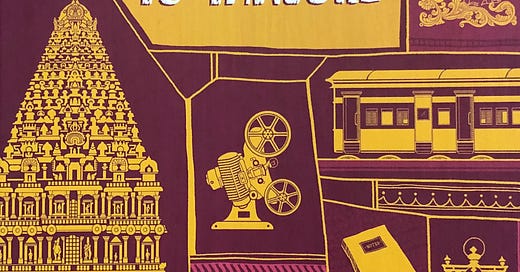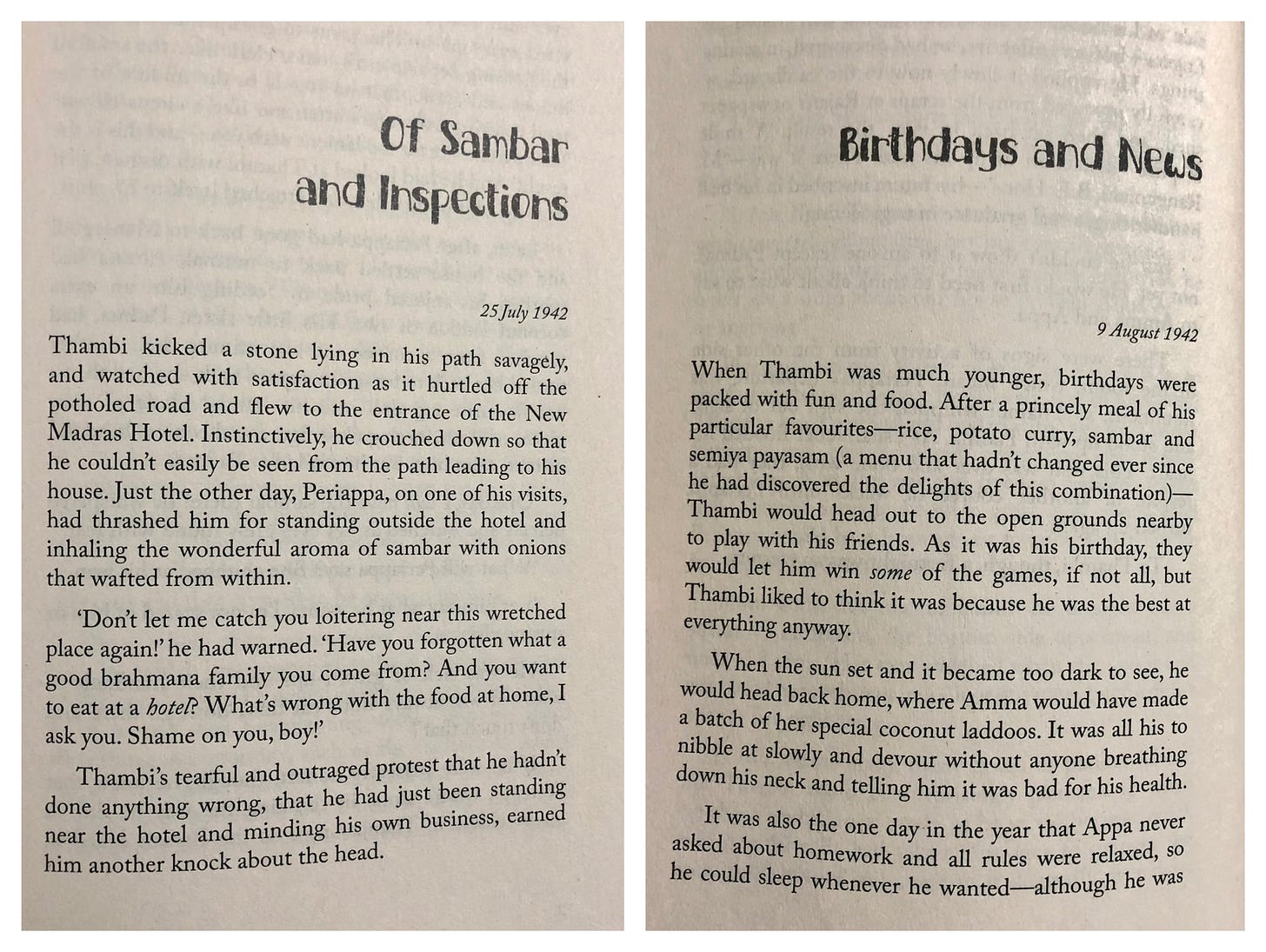“The Train to Tanjore” by Devika Rangachari. Published by Duckbill. A riveting coming of age story of twelve year old Thambi from Tanjore set during the Quit India movement in 1942.
Rangamani, fondly called Thambi at home, lives with his parents and younger sister Padma in Tanjore. There is hardly anything exciting in his quiet and normal life. A new hotel has opened near his home and he is lured by the smell of sambar with onions! But he is forbidden to be even lurking there by elders in his neighbourhood who disapprove of eating outside. His Appa (father) has inculcated the habit of reading newspapers in him by taking him regularly to the government library from the time he turned ten years old. This is his way of knowing what is happening in the world and in India. Other than what Appa tells him by listening to BBC broadcasts in a radio kept at their neighbourhood grocery store.
There are fortnightly visits from his periappa (father’s elder brother) who lived in Manargudi. Thambi just doesn’t look forward to meeting him as he bosses over all of them and wants to lay down his rules over them. He is determined to study hard and become an engineer when he grows up. It is that time when the Quit India Movement is on at full steam. The second world war is also raging across Europe and spilling over to other parts of the world as well. There are rumours of Japanese bombing places along the Indian coast. Tumultuous times indeed! Tanjore is not left far behind and is torn down by protests. There is the Quit India Press circulating mysterious leaflets containing news from all over the country that is not found in newspapers due to British suppression. Mani finds himself in the middle of all this and is inspired by the idea of a free country. During the protests, the train stations at Tanjore and Mannargudi are vandalised. Read the gripping book to know how Thambi faces these demanding times by finding courage to do what he believes is right.
My eight year old and I thoroughly enjoyed reading this book. We just couldn’t put it down. It gave a beautiful glimpse into the lives of people who lived in a town in South India in the 1940s and what freedom might have meant for them. While some were taking unprecedented risks to fight for it, others preferred to steer clear of any kind of danger and lead their lives in a normal way as far as possible. The book is based on the author’s father’s memory of his boyhood in Tanjore. While the characters are fictional, some of the places and events mentioned in the story did exist and take place. This book is part of the “Songs of Freedom” series which explores the lives of children across India during the struggle for independence from the British.
We had already enjoyed reading the other books from the series released earlier this year - “The Chowpatty Cooking Club” and “That Year at Manikoil”. We had been eagerly waiting for the next set of books in the series (this one and “A Conspiracy in Calcutta” which we read next) and they were devoured promptly as soon as they arrived. We found them equally good and interesting like the first set. They instantly got added to our favourites list! :D Last but not the least, I loved the gorgeous cover of the book showcasing some beautiful aspects of Tanjore and the story. The Thalai Atta Bommai (an iconic art of Tanjore since Chola times), the magnificent Big Temple, laddoos, the brass lamp, carving of Peacock etc.
Recommended Age
The book is apt for children aged 9/10+ for reading on their own. It can be read aloud with a bit of explanation for 8+ year olds.
Reasons to Read
To get to know about India’s freedom struggle from the unique perspective of children living in those times.
To get a glimpse of how the life of people in 1940s India was.
Disclaimer - We received this book from the publisher, Penguin India (Duckbill), for review. Thank you to Greeshma and Mansi, from Penguin, for sending across the book!





